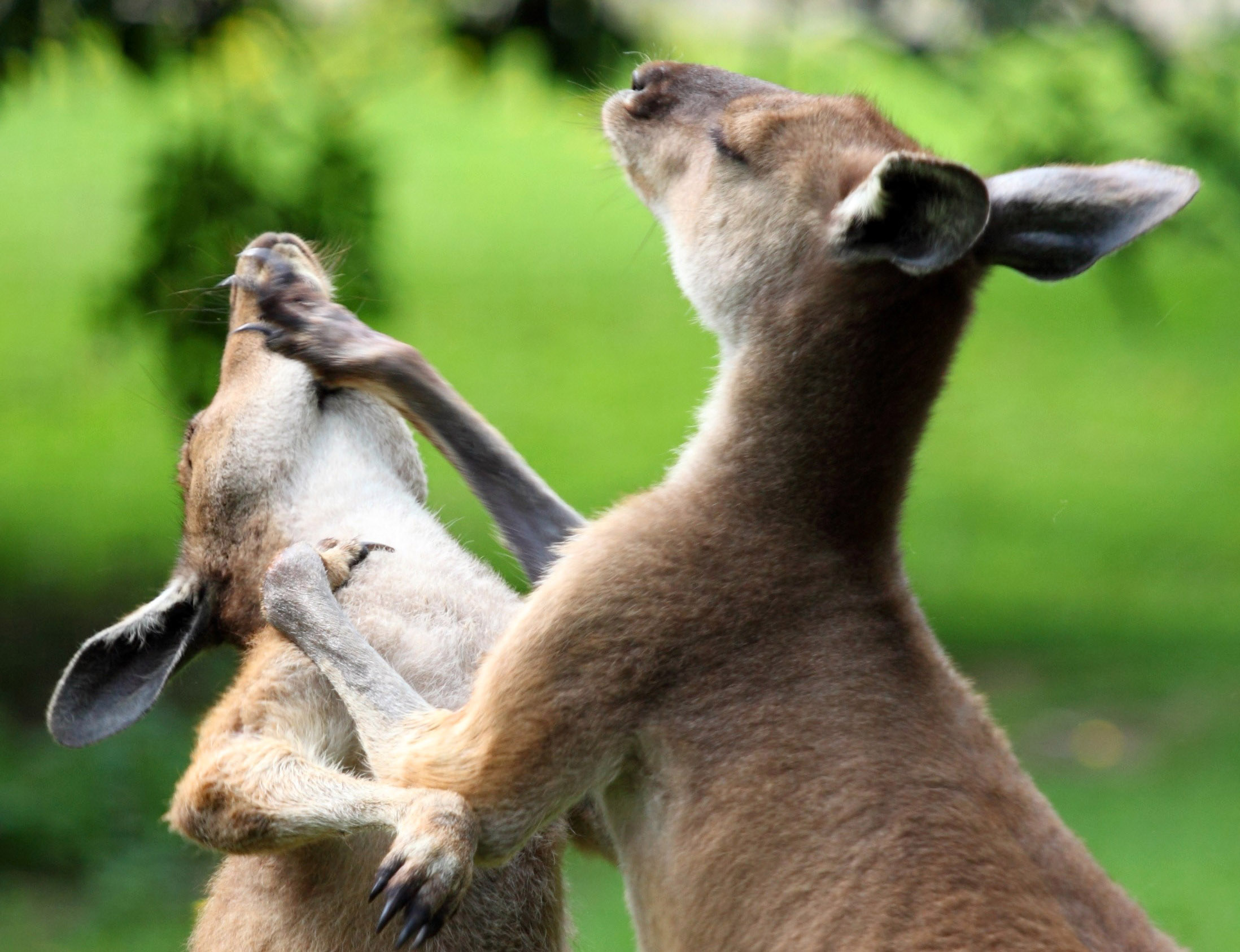
Kangaroos are Australia’s most famous animal hence the continent’s nickanme, the land of kangaroos. Kangaroos are generally intriguing animals from their unusual hopping movement, to muscular hind legs and tails, and several myths surrounding them such as their ability to proficiently throw punches. Depictions of kangaroo in popular fiction such as Roo and Kanga in ‘Winnie the Pooh,’ Sour Kangaroo in ‘Horton Hears a Who!’ and in films such as Kangaroo Jack, may blur the line between what is true and not true about the nature of kangaroos. There are a lot of interesting facts about kangaroos. Let’s dive into some of the facts about kangaroos.
1.There is more than one kind of kangaroo

Just like most of the animals on the earth, kangaroo is the general term used to describe animals that are part of a taxonomic family. For kangaroos, this family is known as Macropodidae that consists of nearly sixty-five different species. An interesting fact about the term Macropodidae is that it is derived from ancient Greek, and it means “long foot,” quite fitting for these animals. In this family, there are lesser-known kangaroos that are small in sizes, such as the tree kangaroo and rat-kangaroo (quokka). The well-known kangaroos, which are characterized by their large size, strong hind legs, and muscular tails, are part of the genus Macropus (a subgroup in the larger Macropodidae family). The species in this genus include the western gray kangaroo, eastern gray kangaroo, red kangaroo, and several wallabies, which are generally smaller than kangaroo and wallaroo.
2.Those legs and a pouch?
Almost all kangaroos, aside from tree kangaroos, share certain distinctive features. The most common are; sturdy hind legs and feet for leaping, which is their primary form of movement, long muscular tails with thick bases for balance when not in motion, short forelimbs that resemble human hands with sharp claws, small heads with large rounded ears and a small mouth. Interestingly, kangaroos do not walk as do other bi-pedal animals hence their hopping motion. Though unclear how they came to hop instead of walk, this method of locomotion is rather advantageous and allows kangaroos to travel for long in search of grass and water. Kangaroos have soft and woolly fur, whose colour largely depends on the species, for example, the red kangaroo may have reddish to brown pelt.

Female kangaroos have a special feature that is characteristic of marsupial mammals, a pouch! This pouch is also known as a marsupium. It is forward-facing and has four teats for nursing young kangaroos, also called joeys. Joeys are born not fully formed as with other mammalian young. They measure about an inch and weigh less than a gram?! After birth, they climb into the mother’s pouch and sucks on a tit, which in turn enlarges to hold the joey in place. The young one receives nourishment from the mother’s milk, which the mother pumps with her muscles because the joey cannot suckle at that time. It continues to grow and, in time, starts spending time in and out of the pouch. At around seven to ten months, the joey is ready to be fully independent.
3.Food for Kangaroos
Kangaroos are herbivorous. Their diet includes, shrubs,grasses,and herbs. Larger species tend to be grazers, while the smaller species are browsers. To accommodate their dietary functions, kangaroos have chambered stomachs similar to cattle and sheep.
4.Predators and other dangers

Kangaroos have very few natural predators. These are mostly wild dogs and the wedge-tailed eagle. Humans are also a threat to kangaroos as people sometimes hunt them for their meat and fur. At times, kangaroos may be victims of human-wildlife conflict, especially with farmers’ crops and homes. Motor vehicle accidents also pose a danger to kangaroos. For example, in Canberra, where kangaroos are numerous, rangers recorded that they had to tend to almost one thousand kangaroos that had been involved in motor vehicle accidents. The good news is that kangaroos are not endangered and have healthy populations.
5.Habitat

Kangaroos can live in a variety of conditions, depending on the species in question. Some places you may find kangaroos include forests, woodlands, Savannah, and plains. The niche in which the kangaroos occupy in the ecosystem is also dependent on the species.
6.Fun facts
- Kangaroos are indeed interesting animals. One fun fact is that some have adapted to live in arid conditions and can go for long periods without water. For example, the Red Kangaroo’s kidneys have adapted to retain more water than usual.
- Another neat trick that kangaroos use is that they only sweat when moving and when at rest, they can increase their breathing rate to about 200 breaths per minute, which in turn cools them down.
- Kangaroos are also known to lick their forearms to cool down. This works by reducing the temperature of the blood that flows through the dense network of capillaries under the skin.
- Kangaroos travel in groups called mobs/ herds or troops, and these can be made up of nearly fifty kangaroos. With their excellent hearing and eyesight, kangaroos can spot a predator from far and thump the ground with their strong feet to alert the rest of the danger.
- Kangaroos can reach speeds of up to 56 km/h and leap up to 9 meters in a single leap.
- The lifespan of a kangaroo in the wild can reach 23 years of age.
- Kangaroos can grow up to 2 meters in height.
- Male kangaroos are known to fight, bite, and even punch each other when asserting dominance in a mob.
- Kangaroos, at times when chased by hunters with dogs, run for water and try to drown the dogs by pressing them down into the water using their fore-paws.
It is safe to say that the representation of kangaroos in popular culture is not entirely false. They do move around by hopping, have pouches, and can actually throw a punch if agitated. These incredible animals are some of nature’s wonders, and it is good to see that Australian authorities are putting in place measures to ensure that they are protected.


































